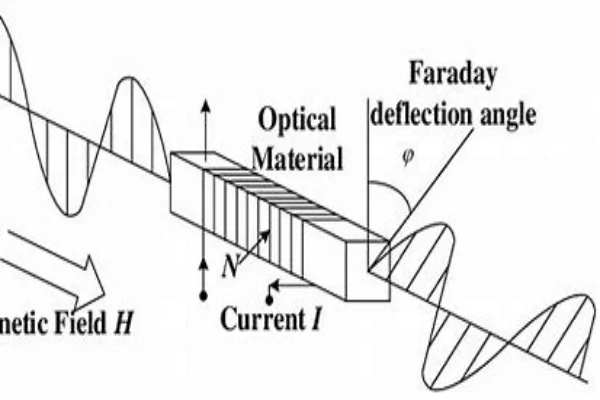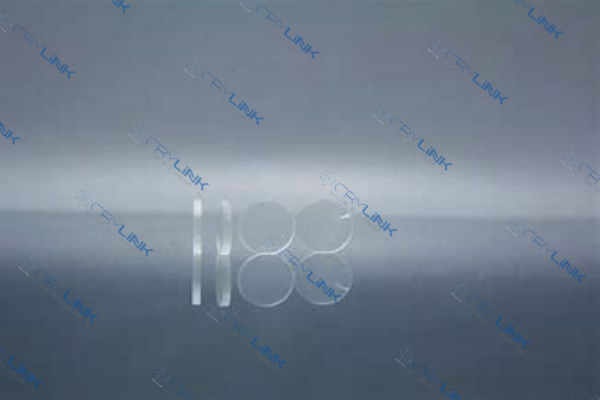Introduction to the Faraday Impact
Firstly, we will explore the fundamentals of the Faraday effect. Named after the researcher Michael Faraday, this phenomenon describes how an electromagnetic field can control the polarization of light, causing what we understand as magneto-optic impacts.
Comprehending Magneto-Optic Crystals
Magneto-optic crystals are vital in the process of tuning the Faraday impact. They have unique residential or commercial properties that enable them to interact successfully with light and magnetic fields, making them extremely preferable in a range of technological applications.
The Properties of Magneto-Optic Crystals
A critical aspect of these crystals lies in their inherent qualities. Their strong magnetic dichroism and magnetic birefringence cause rotation in the airplane of polarization, which is what gives rise to the Faraday result.
Types of Magneto-Optic Crystals
There are numerous types of magneto-optic crystals utilized today, each with its own distinct characteristics. Amongst these, Terbium Gallium Garnet (TGG) and Yttrium Iron Garnet (YIG) are the most typical. They both provide remarkable Faraday rotation and a low absorption coefficient.
The Mechanism of the Faraday Result in Magneto-Optic Crystals
The Impact of Natural Optical Activity on the Faraday Result
Natural optical activity is a phenomenon that is seen in some crystals and particles, where the polarization of light can be turned as it travels through the substance. The degree of rotation can depend on the thickness of the substance, the wavelength of the light, and the substance’s particular rotation. This natural optical activity plays a critical role in the Faraday effect, with magneto-optic crystals leveraging this intrinsic home to allow the rotation of the airplane of polarized light.
In magneto-optic crystals, natural optical activity takes place due to the presence of chiral particles or non-centrosymmetric crystal structures. This structural particular ways that the particles or crystal structures do not have an internal aircraft of balance. It leads to an unbalanced circulation of electronic clouds, developing an environment where light polarization can be affected.
The Effect of Magnetic Circular Birefringence on the Faraday Impact
Magnetic circular birefringence, on the other hand, describes the distinction in refractive indices for left-handed and right-handed circularly polarized light in the presence of a magnetic field. It’s this difference that is responsible for the rotation of the airplane of polarization, an essential feature of the Faraday result.
When a magnetic field is applied to a magneto-optic crystal, the electrons in the crystal orbit under the influence of the field. This causes a shift in their energy levels, developing a difference in absorption for the right-handed and left-handed circularly polarized light. Subsequently, this leads to the rotation of the plane of polarization.
The Interaction in between Natural Optical Activity and Magnetic Circular Birefringence
The interplay between natural optical activity and magnetic circular birefringence in magneto-optic crystals is what makes it possible for the fine-tuning of the Faraday effect. While the natural optical activity offers the initial environment for polarization rotation, the magnetic circular birefringence allows for the external control of this rotation with the application of a magnetic field.
This interaction in between light and magnetic fields is vital in many technological applications. For example, it permits the design of optical isolators in telecommunication devices, where the rotation of the aircraft of polarization guarantees that light travels in only one direction, keeping signal integrity.
Similarly, in laser innovation, the ability to control the instructions and polarization of light is critical in ensuring efficiency and safety. By leveraging the Faraday effect, laser systems can prevent back-reflections that can hurt the laser source.

Figure 1. Mechanism of Faraday result in magneto-optical crystals
The Significance of Magneto-Optic Crystals in Various Optical Gadgets
Magneto-optic crystals are a linchpin in the world of optical gadgets, their special properties enabling a varied variety of applications. The ability of these crystals to control the polarization of light under a magnetic field proves important across many technological sectors.
Influence in Telecommunication
In telecoms, one of the main applications of magneto-optic crystals is in optical isolators. An optical isolator allows light to travel in one direction only, keeping the stability of the signal and avoiding feedback that may disrupt the source. This unidirectional circulation of light is facilitated by the Faraday result, which is made it possible for by the use of magneto-optic crystals.
Function in Laser Technology
In laser technology, magneto-optic crystals play an important function in Faraday rotators and isolators. These components secure the laser source from potential damage due to back-reflected light. By utilizing the Faraday effect, the direction of light proliferation is controlled, improving the effectiveness and security of laser systems.
Application in Data Storage
In the field of data storage, magneto-optic technology presents a robust option for recording and retrieving information. Magneto-optic drives, for example, leverage the residential or commercial properties of these crystals to write data utilizing a laser and electromagnetic field. The crystals allow for high-density storage, making this innovation attractive for applications needing significant information storage capability.
Usage in Optical Changing
Magneto-optic crystals are likewise making their mark in the field of optical switching. In devices such as optical routers and switches, making use of these crystals can allow faster, more efficient signal routing. The light’s polarization can be managed utilizing an electromagnetic field, enabling the changing of signals without the requirement for electrical conversion.
Applications of Magneto-Optic Crystals in Tuning the Faraday Result
Utilizing the Faraday result through magneto-optic crystals has actually led to various developments in the field of optics. From telecommunication gadgets to laser innovation, the influence of these crystals is rather substantial.
Telecommunication Devices
In the realm of telecommunications, magneto-optic crystals play a key role in optical isolators, gadgets that permit light to travel in one instructions just. This helps preserve the stability of the signal, leading to clear and exact interaction.
Laser Innovation
Magneto-optic crystals are also important in laser technology, specifically in Faraday rotators and isolators. They make sure that the light travels along the desired path, thereby boosting the effectiveness and security of the laser systems.
Future Potential Customers of Magneto-Optic Crystals and the Faraday Effect
The impact of magneto-optic crystals on the Faraday effect is most likely to extend even more into the future. The ongoing research study in this domain promises breakthroughs that could change our understanding of light and electromagnetic fields.
Quantum Computing and Information Processing
Quantum computing is an emerging field where magneto-optic crystals might have substantial implications. The special homes of these crystals, particularly their interaction with light under an electromagnetic field, could be utilized for quantum information processing. In these systems, the states of quantum bits (qubits) could be manipulated utilizing the Faraday effect. As we continue to check out quantum computing’s potentials, magneto-optic crystals’ capability to manage and control light residential or commercial properties could be a game-changer in this market.
Developments in Telecommunication
In the telecommunications sector, the ever-increasing need for faster and more dependable interaction systems continuously drives research study into light and electromagnetic field interactions. Enhancements in magneto-optic crystals could possibly pave the way for the next generation of telecommunication systems, providing increased data transmission rates and better signal stability. Moreover, developments in these crystals could allow more effective optical isolators, lowering signal loss and improving overall system performance.

Figure 2. Magneto Optical Crystals
Improvements in Medical Diagnostics
In the field of medical diagnostics, magneto-optic crystals provide the capacity for non-invasive, high-resolution imaging. Research is underway to additional improve the imaging quality and resolution using the Faraday result. As we move on, these advancements could lead to more accurate diagnoses and a much better understanding of biological procedures at a cellular level.
Development of Data Storage Solutions
As our information storage requires continue to grow, magneto-optic technology provides a scalable solution that can fulfill these increasing demands. The research into enhancing the information writing and reading systems in magneto-optic drives might potentially lead to substantially increased storage capacities, faster data retrieval, and more reputable storage options.
Conclusion
In summary, magneto-optic crystals hold the crucial to utilizing and tweak the Faraday impact. The interaction in between light and magnetic fields within these crystals opens a range of possibilities in optical innovations. The potential applications and future developments just heighten the intrigue and value of this interesting field.
Frequently Asked Questions
What is the Faraday effect?
The Faraday result is a phenomenon where the polarization of light can be altered using a magnetic field. This is likewise known as a magneto-optic effect.
What are magneto-optic crystals?
Magneto-optic crystals are products with special properties that allow them to connect with light and magnetic fields. These residential or commercial properties make them appropriate for tuning the Faraday effect.
How do magneto-optic crystals influence the Faraday effect?
Magneto-optic crystals allow for the rotation of the plane of polarization, which is the crucial aspect of the Faraday result. This happens due to their magnetic dichroism and magnetic birefringence.
Where are magneto-optic crystals used?
Magneto-optic crystals are mainly utilized in telecoms and laser technology. They play an essential role in optical isolators and in making sure that light journeys along the wanted course in laser systems.
What is the future of magneto-optic crystals and the Faraday result?
The field is ripe for development, with continuous research study promising brand-new breakthroughs. The application of magneto-optic crystals in tuning the Faraday effect has immense capacity to revolutionize optical innovations.

